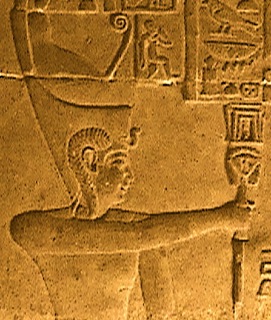Rainbow Mage
Lib Democrat/Agnostic/Epicurean-ish/Buddhist-ish

Sekhmet-Mut is an interesting and uncommon Goddess. She is a special form of Sekhmet found at the temple of Mut at Karnak. At this particular temple, there are multiple statues of a lioness-headed woman, seated, wearing a crown of uraei. This is Mut as Sekhmet, or Sekhmet as Mut. Sekhmet-Mut functions as a syncretization of the roles of Sekhmet and Mut - a combination of the two Goddesses which creates a fundamentally new Goddess with a role similar to that of both Sekhmet and Mut.
The syncretization of Sekhmet and Mut is not just a modern association. As previously mentioned, Sekhmet and Mut are associated quite obviously at the temple of Mut at Karnak. Mythologically, They are also associated via Mut-Sekhmet-Bast, a combination of many of the leonine Goddesses found in the New Kingdom. Historically, the association between Sekhmet and Mut illustrates both the aggressive side of Mut and the gentler, more diplomatic side of Sekhmet. Mut, like Sekhmet, was considered one of the Eyes of Ra - one of the powerful Goddesses invoked to defend the lands of Kemet. On at least one statue of Sekhmet, seated, is the inscription "joined with Mut".
Ihy

Ihy is actually a child form of Heru-sa-Aset (Horus the Younger), who later came to be venerated as his own name at Dendara, at the temple of Hethert (Hathor). While traditionally Heru-sa-Aset was seen as being the son of Wesir (Osiris) and Aset (Isis), this particular mode of Heru the Younger was instead seen as being the son of Heru-Wer (Horus the Elder) and Hethert.
